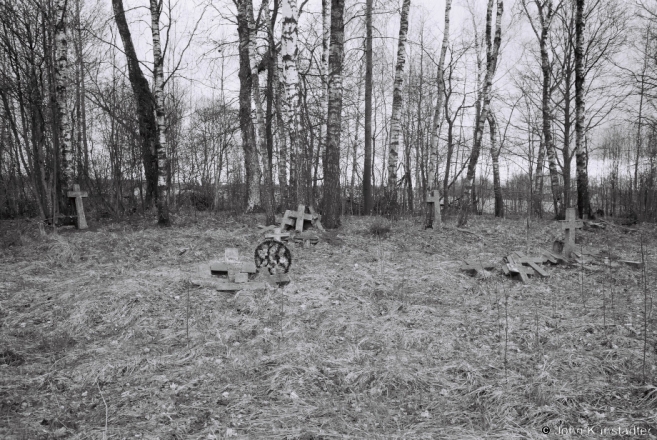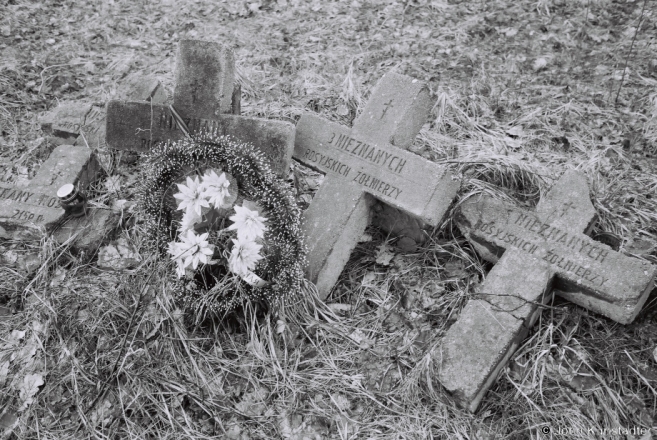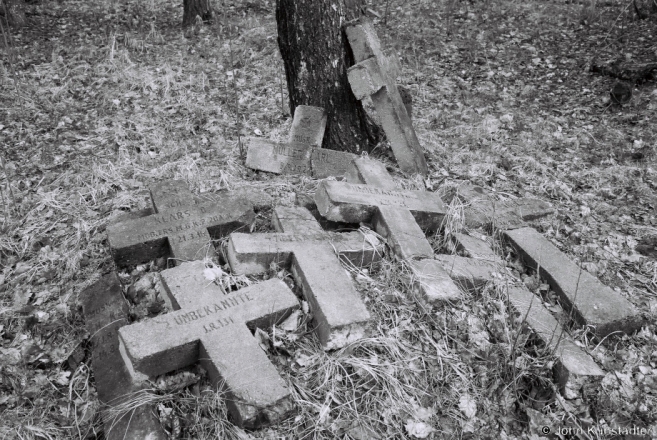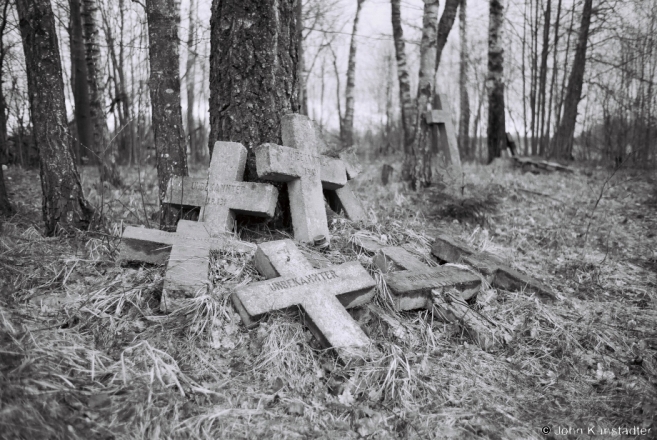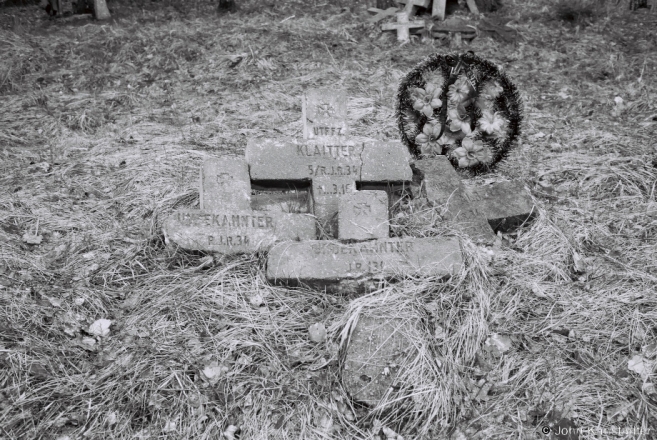April 2017 photo expedition to Vjaljejka, Mjadzjel and Pastavy Districts with Anton Astapovich, chairman of the Belarusian Association for the Preservation of Historic and Cultural Monuments (БДТАПГК) and regional historian and conservationist Andrej Matsur. Part III/IV: along the trace of the Eastern Front — German imperial army World War I fortifications and cemeteries in Pastavy District (Jareva, Sviljeli, Norkavichy, Dvarchany).
Фотавандроўка ў красавіку 2017 г. з Антонам Астаповічам, старшынёй Беларускага дабраахвотнага таварыства аховы помнікаў гісторыі й культуры (БДТАПГК) і пастаўскім краязнаўцам Андрэем Мацурам па спадчыне Вялейскага, Мядзедьскага й Пастаўскага раёнаў. Частка III/IV: па лініі Ўсходняга фронту — доты й могілкі нямецкай імперскай арміі ў Пастаўскім раёне (Ярэва, Свілелі, Норкавічы, Дварчаны).
After World War I the German War Graves Commission (Volksbund Deutsche Kriegsgräberfürsorge — “Volksbund”) paid the government of the Second Polish Republic to look after German war cemeteries on Polish territory, which between 1921 and September 1939 included the western Belarusian lands. The Poles undertook careful exhumations and where necessary reburied soldiers’ remains under new tombstones in more than 150 cemeteries in the Belarusian lands. In some cases the remains were those of soldiers from the Russian imperial army; the Poles treated those remains with equal respect. During the interwar period, the Soviet regime showed no interest in honoring Russian imperial army graves in Poland. After occupying the western Belarusian lands when it invaded Poland together with Nazi Germany, the Soviet regime neglected all World War I cemeteries. Since the collapse of the Soviet empire, the Volksbund has again been active in helping put some larger German World War I cemeteries in Belarus in order; however, the Volksbund does not provide funding for the upkeep of smaller cemeteries such as here. It is thus up to local volunteers or organized preservation groups to keep the cemeteries in order.
World War I cemeteries (part XIV): graves of soldiers from the German and Russian imperial armies, Svileli.
This cemetery, which local historian Andrej Matsur and fellow historians from Pastavy cleaned up and have begun to put in order, is one of several in the immediate vicinity.
Могілкі Першай сусьветнай вайны (частка XIV): магілы салдатаў нямецкай і рускай імперскай армій, Свілелі.
Дзякуй пастаўскім краязнаўцам на чале з Андрэем Мацурам, якія прыбралі гэтыя занядбаныя могілкі.
These crosses are an example of the diligent work the Polish authorities carried out during the interwar period: not only did they restore and maintain German World War I cemeteries with financial support from the German National Union (Volksbund), they also prepared new, permanent gravestones for remains of Russian imperial soldiers they discovered during their work. The three crosses in the foreground carry Polish inscriptions “Unknown Russian soldier”, “Three unknown Russian soldiers”, and “Five unknown Russian soldiers”. Neither during the interwar period nor after the Soviet Union occupied the western Belarusian lands did Soviet authorities make any effort to preserve or honor the remains of soldiers of the Russian imperial army who fell along the Eastern Front in World War I.
The inscriptions on these crosses are a mix of named and unknown German soldiers; the crosses had lain neglected and in disarray for decades until the Pastavy volunteers cleaned up the cemetery.
